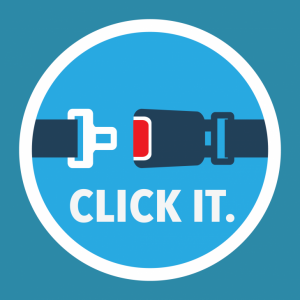
Familiarity does not always, as the saying goes, breed contempt. But, if we’re not intentionally trying to prevent it, familiarity can — and often does — breed disregard or neglect.
“Click It or Ticket,” the well-known and, by all measurements, very successful campaign aimed at increasing Americans’ use of their seatbelts, will turn 15 years old during this year. The two-week national campaign runs until June 4, and there’s much to celebrate. Deaths resulting from vehicular crashes in the United States have fallen from 43,005 in 2002, the year before Click It or Ticket first was launched, to as low as 32,479 in 2011 — the fewest since 1949 when the U.S. population was less than half of what it is today. In 2014 just 32,675 million Americans died in vehicular crashes and the rate of deaths reached an all-time low of 1.08 per 100 million vehicle miles traveled.
However, just as your teenager seems to ignore your commands to take out the trash the more you tell him or her to do so, there’s a tendency for drivers to ignore even wise and well-delivered admonitions like Click It or Ticket as they grow more familiar and commonplace. And, sadly, there’s a bit of evidence suggesting that is happening. Highway deaths have risen each of the last two years and last year topped the 40,000 level for the first time since 2007. It’s not clear how much of that increase is directly attributable to drivers and passengers’ failure to buckle up as opposed to increased speed and/or driver inattention (fueled by the use of smart phones, advanced in-vehicle entertainment systems, driving while eating, and other forms of driver distraction).
But clearly, there’s cause for worry. Are we becoming too familiar with the Click It or Ticket theme? If so, there’s only two possible solutions: Get a snazzy new advertising message that will capture the attention of 350-million drivers in this country (a seriously tall order), or we all consciously commit ourselves both to not ignoring the Click It Or Ticket ads and to actually “Clicking It” every time we get in a car or truck.
A surprising number of drivers don’t buckle up
One would think that truck drivers and others in the trucking industry, and especially those with specific safety-focused jobs, would understand the seriousness of the Click It or Ticket message more than any other group of motorists. And perhaps they do. But that understanding is not perfect.
According to the National Highway Traffic Safety Administration in 2014, the last year for which such data are fully available, 37 passengers in riding in the cab of a large truck were killed in highway crashes. Of that number, roughly a third of them were ejected from the cab during an accident. Now, there’s no way of knowing whether those who were ejected would have survived had they remained in the cab, but experience and common sense tell us that in the vast majority of crash situations the human body stands a better chance of surviving the incredible forces of impact if it remains protected by the heavy structural metal of a modern truck cab.
And big truck passengers aren’t the only ones endangered by not wearing their seatbelts. A March 2014 Federal Motor Carrier Safety Administration survey showed that 16 percent of commercial vehicle drivers don’t use seat belts. That’s better than the 27 percent of commercial vehicle passengers who the survey showed typically don’t belt up, but it’s still a confounding number. How could CDL-possessing drivers, who by law and industry practice have had more highway safety training than any other group of Americans, whose driving behavior is under constant scrutiny by law enforcement (and in many cases, their bosses), and whose very livelihood would be threatened if their superiors found out they were driving unbuckled, still choose not to wear their seatbelts when behind the wheel?
It’s time to break those bad habits
Sadly, in some cases it’s a matter of stubbornness. But let’s hope that in most cases it’s just an old, bad habit that’s really hard to break or sloppiness.
And that’s exactly why it’s important to heed the message in the Click It or Ticket advertising. It’s important to take those admonitions seriously, even if you’re batting 1.000 in buckling up. If you are a conscientious user of your seatbelts, become an evangelist for doing so among your co-workers, or with other drivers with whom you chat at truck stops, loading docks or at your company’s terminal. That’s how we in the industry can avoid letting the critical message of Click It or Ticket becoming just another ad slogan we ignore.